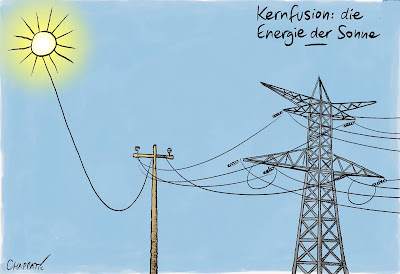The New York Times reported:
The result announced on Tuesday (Saint Nicholas Day, December 6) is the first fusion reaction in a laboratory setting that produced more energy than it took to start the reaction.
. . . If fusion can be deployed on a large scale, it would offer an energy source devoid of the pollution and greenhouse gases caused by the burning of fossil fuels and the dangerous long-lived radioactive waste created by existing nuclear power plants, which use the splitting of uranium to produce energy.
. . . There was always a nagging caveat, however. In all of the efforts by scientists to control the unruly power of fusion, their experiments consumed more energy than the fusion reactions generated.
That changed at 1:03 a.m. on December 5, when 192 giant lasers at the LL laboratory's National Ignition Facility blasted a small cylinder about the size of a pencil eraser that contained a frozen pellet of deuterium and tritium, the heavier forms of hydrogen.
This is the classic nuclear fusion process being studied in many laboratories worldwide. Red Baron reported. This time, however, we not only had ignition but also a nuclear reaction lifting off.
This all happened at LLL, the Lawrence Livermore Laboratory, where its Director Kimberly S. Budil voiced his caveat about the clean and inexhaustible energy source solving mankind's major problem.
The technological development of a fusion power plant will take "probably decades," Budil said, "not six decades, I don't think. I think not five decades, which is what we used to say. I think it's moving into the foreground, and probably, with concerted effort and investment, a few decades of research on the underlying technologies could put us in a position to build a power plant." What a cranky phrase.
Red Baron is a confirmed pessimist. First, nuclear fusion is not a clean energy because the nuclear reaction produces enormous amounts of neutrons that will create (admittedly only short-lived) radioactivity.
However, these high neutron fluxes challenge the materials used in constructing a fusion reactor. No material is currently known to support the prolonged impact of neutron radiation, and metals become brittle after extended exposures.
Material
damage is actually the primary cause of fission reactors shutting down. Safety reasons
demand that components like boiler vessels and pumps must be replaced because
of radiation damage to their construction materials.

|
| Our sun. The only working fusion reactor (©Chappatte/Der Spiegel) |
No comments:
Post a Comment